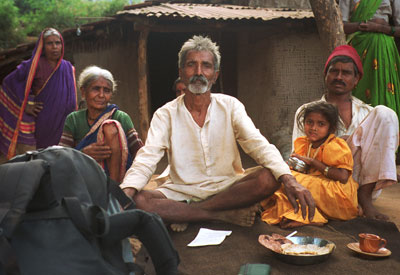
SX Magazine December 2002
“NAMASKAR!” the old man exclaimed.
“Namaskar!” I said in return, pressing my hands together and smiling at the incongruity of our meeting.
He was old, maybe 75, wearing a faded white cotton kurta and ancient leather sandals. I was in a black and yellow flying suit, with zips, pockets and thinsulate lining, high-ankled boots and a full-face flying helmet. I had a thousand dollars worth of GPS, vario and altimeter strapped to my leg. Collapsed in the small field behind me was my yellow paragliding canopy and a harness that looked secure enough for a crash-test dummy. I was feeling a bit overdressed; he had a stick.
To get here I’d flown Emirates to Mumbai, train to Pune, bus to Panchgani, jeep to the flying site and the last 25km had been by paraglider. He had walked.
“Ap aha ja rake?” he asked – where are you going?
“Panchgani,” I said.
“Then come walk with me,” he grinned.
Panchgani rates 16 lines in Lonely Planet’s 1300 page guidebook to India. Even in the furthest corners of the web’s chat-rooms and message boards devoted to the esoteric sport of adventure flying, Panchgani barely gets a mutter.
In India though, in the laid back paragliding ‘hot spots’ of Arambol beach in Goa and Kamshet in the Western Ghats east of mumbai, Panchgani is described as “awesome”.
And rightly so. Here, the flat topped hills are at 1300m, with wide valleys, enough jungle to make flying across it seem scary, hot sun and roads for getting home again – near perfect flying terrain.
As not much cross-country flying had been done here (that is, flying away from your take-off point and travelling distance, not just around the hill or to the bottom), the game was to go as far as possible.
Later, we would fly across the hills of the Western Ghats to land 50km west, near the coastal plains, but for now, these exploratory flights up the valleys were taking me interesting places.
“Char wagh!” The old man was saying as we walked. “Four tigers!” As a young man under the Raj, Nari Ari Pujari had been a tracker in the army. In this very valley he’d taken ‘char wagh!’ The skins were sent to Delhi; the claws to Pune to be made into necklaces.
That was before WWll and since then he said, waving his arms at the stunted trees and dusty fields, “Too many people”. He meant the jungle had become firewood and the river had been castrated by a dam; centuries old temple carvings sit piled under trees, rescued from the rising flood but now just a jumble of stones.
As we walked we talked. Although he had no English and I had no Marathi, we talked tigers and flying, the changing environment and the British in India. He sang songs and picked sour berries from the bushes to quench our thirst.
Late in the afternoon, when we eventually came to the dam where a solitary bus sat at the roadhead, he waved me off and wished me good luck. The bus jerked and we thumped into the ruts. I couldn’t believe it, I hadn’t just flown up the valley, it felt like I’d flown into the heart of India.
Paragliding’s very small in India, but has a devoted core of Indian and Western pilots. Although it’s cheap and easy to learn in Goa and Kamshet, the structure is too loose, the equipment too old and the culture of safety too rare to ensure a decent learning curve. Witness the poor Brit who disappeared in the Himalaya in Himachel Pradesh in March this year. Joel Kitchen, 25, learnt to fly on the beach in Goa then headed north in the springtime. This is akin to a mate showing you how to ride a bike then setting off on the Paris-Dakar. You’re probably going to come off.
From the air, the tablelands around Panchgani are beautiful. Climbing in thermals is like sailing a small boat in the sea: there’s not a lot of time to look around because the waves just keep coming. It’s not nearly as peaceful as it looks from the ground. But as you climb higher time sort of expands with the view.
At 2500m in bouyant evening air you can glide for miles across closed, jungle-filled valleys, steep rock faces and sharp spurs with tiny villages tucked beneath the shadows of cliffs and mountain-tops. Beyond this jagged landscape the hills open out into broader valleys and the land becomes richly agricultural, dotted with coconut palms and banana trees. In the distance, you kid yourself, you can see the Indian Ocean another 50km west.
Landing an hour before dusk in an empty field, the heat and the life on the ground rushes up to you, overpowering you with elation. Children come running from nowhere, surrounding you, touching you, laughing and screaming. You take your helmet off, snap a picture of faces and smile. Beyond them, groups of men and women gather at a short distance, smiling hello, namaskar. You unbuckle and take a look around. The adventure has only just begun.








0 comments:
Post a Comment